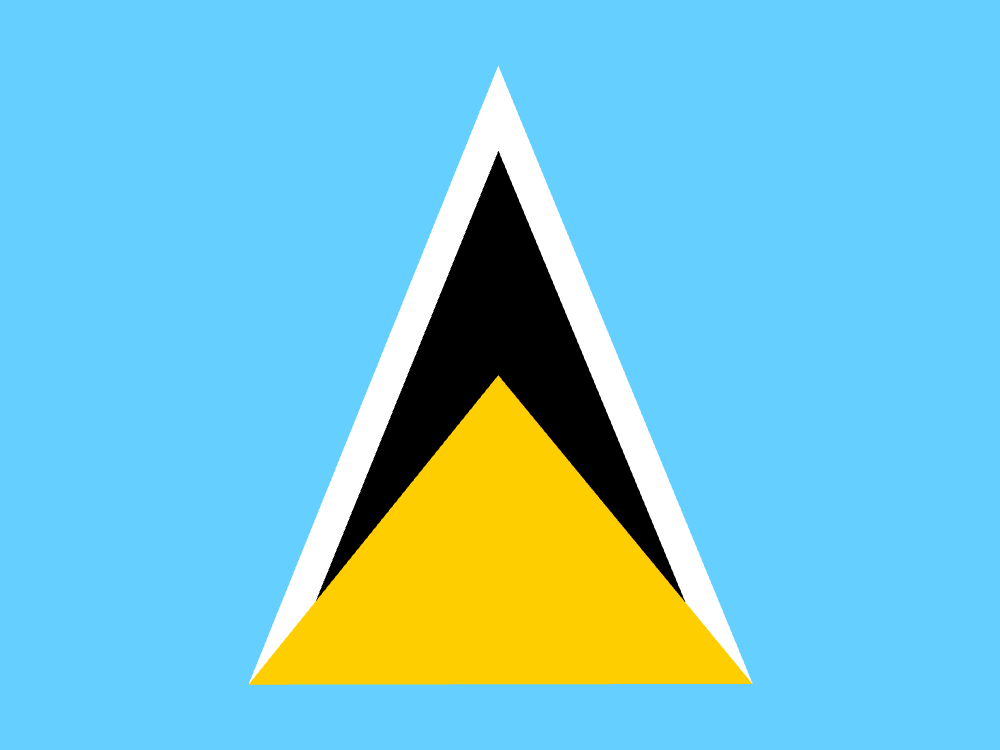Exploring Saint Lucia
Saint Lucia is a small island country in the eastern Caribbean and part of the Lesser Antilles. It’s located near the islands of Saint Vincent, Barbados, and Martinique, with a population of around 180,000 and Castries as its capital.
The island’s history is rich, first settled by the Arawaks, then the Kalinago, before European powers arrived. The French and British fought many times over Saint Lucia, earning it the nickname “Helen of the West.” Eventually, the British took full control in 1814. Saint Lucia gained independence in 1979 but remains part of the British Commonwealth.
Since gaining independence, Saint Lucia has grown into a vibrant and peaceful nation known for its stunning natural beauty and rich cultural traditions. The island is famous for the iconic Pitons—two volcanic peaks that are a UNESCO World Heritage site—as well as its lush forests, waterfalls, and beautiful beaches. Tourism plays a big role in the economy, with visitors drawn to the island’s outdoor adventures, world-class resorts, and warm hospitality.
Saint Lucia also celebrates a lively culture influenced by African, French, and British heritage. Music and dance are a big part of island life, especially during events like the annual Saint Lucia Jazz Festival and Carnival. The island’s food is a delicious blend of flavors, with dishes like green fig and saltfish (the national dish), fresh seafood, and Creole spices reflecting its diverse roots. Overall, Saint Lucia offers a unique mix of natural wonders and cultural richness that make it a favorite Caribbean destination.

Facts About Saint Lucia
- Capital: Castries
- Official Language: English
- Population: 179,285 (based on 2023 Census)
- Currency: Eastern Caribbean Dollar (XCD) | Exchange Rate
- Time Zone: Atlantic Standard Time (GMT-4)
- Electricity Plug Type: Type G
- Drive on the: Left
Best Time to Visit Saint Lucia
The best time to visit Saint Lucia is between December and April, when the weather is warm, sunny, and less humid—ideal for beach days, hiking the Pitons, and exploring the island’s natural beauty. This is also the peak tourist season, so expect more visitors and higher prices, especially around the holidays.
If you want to save some money and skip the crowds, consider traveling during the shoulder seasons from May to June or October to November. While you might encounter some rain showers, these months often offer better deals on accommodations and flights. Keep in mind that hurricane season runs from June to November, with the highest risk usually between August and October, so it’s a good idea to check weather updates before planning your trip.
No matter when you choose to visit, Saint Lucia’s stunning landscapes, vibrant culture, and welcoming people make it a great destination year-round.
What to Expect When Visiting Saint Lucia
Visiting the Caribbean means stepping into a world of stunning beaches, vibrant cultures, and warm hospitality. Each island has its own unique charm, but there are some common things you can expect no matter where you go. From places to stay and how to get around, to the languages spoken and what activities to enjoy, here’s a quick overview to help you prepare for your trip, but be sure to take time to read the full travel tip guide for your destination!
How to Get to Saint Lucia
Most visitors arrive in Saint Lucia by flying into Hewanorra International Airport (UVF) near the southern town of Vieux Fort, or George F. L. Charles Airport (SLU) near the capital, Castries. Several major airlines offer direct flights from North America and Europe, making it easy to reach this Caribbean gem. Cruise ships also regularly dock at Castries, providing another popular way to visit.
Where to Stay in Saint Lucia
Saint Lucia has accommodations to suit all budgets, from luxury resorts with stunning views of the Pitons to charming guesthouses and budget-friendly inns. Popular areas to stay include Rodney Bay for nightlife and beaches, Soufrière for nature lovers, and Castries for city access. Booking in advance is recommended, especially during the tourist season.
How to Get Around in Saint Lucia
Getting around Saint Lucia is fairly straightforward with options like taxis, rental cars, and public minibuses. Taxis are convenient but can be pricey, so agree on fares upfront. Renting a car gives you the freedom to explore at your own pace, especially if you want to visit more remote spots. Minibuses are an affordable choice, but can be crowded and less reliable.
Languages of Saint Lucia
English is the official language of Saint Lucia, used in schools, government, and business. However, many locals also speak Saint Lucian Creole French (Kwéyòl), which reflects the island’s French heritage and is commonly heard in everyday conversation, music, and cultural events.
Currency Used in Saint Lucia
The Eastern Caribbean dollar (XCD) is the official currency in Saint Lucia. US dollars are widely accepted in tourist areas, but it’s helpful to have some local currency for markets, taxis, and smaller purchases. ATMs are available in major towns and resorts. Many vendors and tourist attractions accept debit and credit cards, but some require cash only – be sure to check online to know before you head out for your explorations.
Things to Do in Saint Lucia
Saint Lucia offers a wealth of activities, from hiking the famous Pitons and relaxing in natural hot springs to snorkeling vibrant coral reefs and exploring lush forests. Don’t miss visiting the Sulphur Springs, touring historic plantations, or enjoying the island’s vibrant festivals and delicious Creole cuisine. Whether you’re after adventure or relaxation, Saint Lucia has something for everyone.
Recent Travel Guides for Saint Lucia
The Ultimate St. Lucia Travel Guide
History of Saint Lucia St. Lucia is an island in the Caribbean with a rich history that began long before European arrival. Originally, the island was inhabited by indigenous peoples, such as the Arawaks and the Caribs. These groups lived on the island for centuries,...

